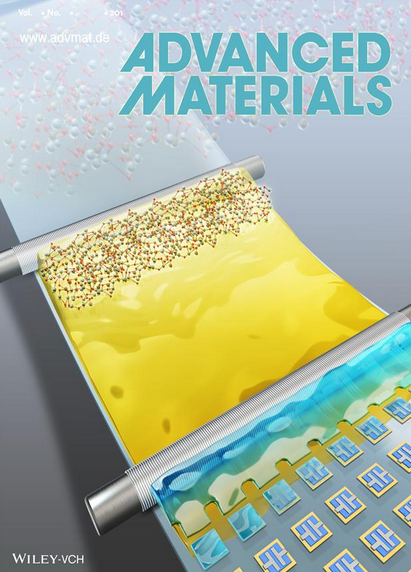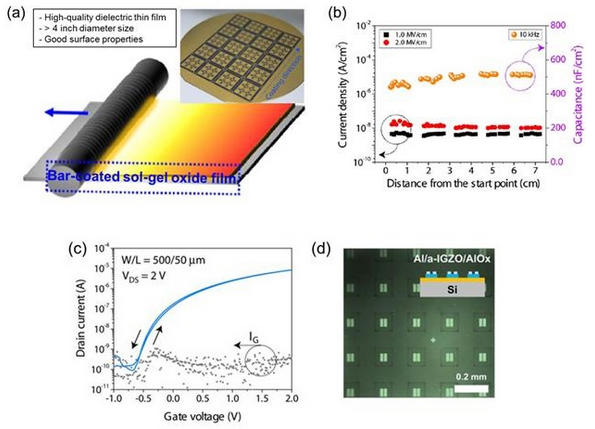Media Center
A multimedia mosaic of moments at GIST
GIST Excellence
[Press release] Professor Myung-Han Yun’s team develops large-scale printing methods and pattern solutions to maximize energy efficiency
- 엘리스 리
- REG_DATE : 2015.09.18
- HIT : 880
Development of large-scale printing methods
and pattern solutions to maximize energy efficiency

GIST Prof. Myung-Han Yoon, Dongkuk Univ. Prof. Yong Young Noh
GIST Ph.D. candidate Wonjune Lee, Dongkuk Univ. Ph.D. candidate Wontae Park.
A joint research team from GIST and Dongkuk University successfully fabricated a large-scale printed-electronics based on a newly designed solution process that uses a high-performance metal oxide ultrathin insulator through an oxidized wire-bar printing method. This method succeeded in lowering the power consumption by 1/10 in wearable devices.
Funded by the Global Frontier Project of the Ministry of Science, ICT and Future Planning. The project was led by GIST School of Materials Science and Engineering professor Myung-Han Yoon and Dongkuk University Department of Fusion Energy Materials Science and Engineering professor Yong Young Noh, and the research was conducted by GIST Ph.D. candidate Wonjune Lee and Dongkuk University Ph.D. candidate Wontae Park.
Their paper was published in Advanced Materials on September 9, 2015, and the cover design was selected as the inside cover for the back page.

* wire-bar coating: the wire is wrapped on a metal rod and spreads and coats ink on a surface as it rotates
Recent studies indicate that wearable electronic devices have issues with high power consumption and low electrical performance. However, to reliably power a wearable electronic device, the insulator must be relatively thick, and this causes problems with increased power consumption.
Unlike expensive methods of lowering power consumption that uses aluminum oxide (AlOx) and hafnium oxide (HfOx), the team developed a low-cost printing method. The team created a new coating technique for applying an oxide coating by using a bar printing process. This coating process was only used for simple surface coatings, for films of adhesives, and for paints and carbon materials.

(a) bar coating process, (b) results of location-specific uniformity of insulators,
(c) low power high performance chart, (d) self-patterned array
The team developed functional inks from insulating materials, such as aluminum and hafnium oxides. Then using the bar coating method, they were able to control various formation conditions to produce high-quality thin sol-gel oxide film. The development of the oxide bar coating process has the benefit of lowering the insulating layer thickness to almost 10 nanometers while maintaining high insulating properties and a large area of uniformity. Also, when compared with spin-coating, the bar coating process uses less than 1/100 of the ink; therefore, bar coating can save significant amounts of raw material with regard to ink production and usage.
Professor Myung-Han Yoon said, “The development of the printing method of oxide electronic material in conjunction with high-quality cold-forming method of the metal oxide will contribute to the commercialization of large area flexible displays.” Professor Yong Young Noh said, “If our method is applied to the production of the next-generation low-power wearable devices, we are expect to save people from the trouble of having to frequently recharge their batteries thanks to the benefits of having lower power consumption.”